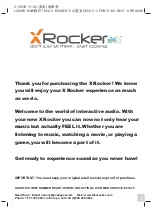
Setup and Test
137
Set RX sensitivity using a DACU without Calibrated Coupler
This procedure should be used to commission the CT if using a DACU. At the end of this test
a label with the calibrated value should be attached to the coupler. Calibrated attenuators and
cables are provided with the DACU for this test.
The RX sensitivity is set according to the required CT RX level. It is important to note that the
lower the modulation rate the further the geographical spread. For maximum range the
AS4020 should use QPSK 1/2. Higher data rates may be achieved using higher orders of
modulation but the range will lessen as the modulation rate increase. This level is determined
as part of the planning function and takes into consideration the highest modulation rate to be
offered and the noise floor predicted in the planning stage.
The RX Level is set dependant on the highest operational modulation rate as follows. By
undertaking an appropriate level of RF planning the level is optimised in order to balance
uplink data rate and system range.
Typical levels are shown below for two network configuration scenarios:
For networks where only a single RF Channel is operating, or only ad one RF
Channels are used (no co or adjacent channel interference), the following CT Rx levels apply:
Rx Level (dBm / RW)
Modulation
Code
Rate
Below 3GHz
Above
3GHz
Session
ids for
LAT TE
command
in Mode 3
QPSK
1/2
-105 dBm
-103dBm
58 or 59
QPSK
3/4
-103 dBm
-101dBm
56 or 57
16QAM
1/2
-97 dBm
-95dBm
54 or 55
16QAM
3/4
-93 dBm (see note 1)
-91dBm
52 or 53
64QAM
3/4
Not supported on the uplink
Table 1
Note 1:
Note, 16QAM ¾ is only supported on the uplink with up to 7RW codes active.
For networks where co or adjacent frequencies are reused to provide “cellular type”
network coverage with limited available spectrum (ie. A relatively high level of co and
adjacent channel interference), the following CT Rx levels apply:
Rx Level (dBm / RW)
Modulation
Code
Rate
Below 3GHz
Above
3GHz
Session
ids for
LAT TE
command
in Mode 3
QPSK
1/2
-103 dBm
-100dBm
58 or 59
QPSK
3/4
-101 dBm
-98dBm
56 or 57
16QAM
1/2
-94 dBm
-92dBm
54 or 55
16QAM
3/4
-90 dBm (see note 1)
-88dBm
52 or 53
64QAM
3/4
Not supported on the uplink
Table 1a
1. The DACU should be powered up and allowed to warm up for 30 mins to achieve
stability prior to setting the RX sensitivity. For details on setting up the DACU see
Connecting the DACU
2. Enter the loss values in the DACU calibration chart for the relevant frequency See
chart below
Summary of Contents for AS4000
Page 2: ......
Page 6: ...Printed Documentation 2 ...
Page 14: ...Printed Documentation 10 ...
Page 16: ...Printed Documentation 12 ...
Page 27: ...Installation 23 Typical 75ohm DDF Layout ...
Page 28: ...Printed Documentation 24 ...
Page 41: ...Installation 37 ...
Page 42: ...Printed Documentation 38 BNC Terminations to Coax ...
Page 43: ...Installation 39 Type 43 Terminations to Coax ...
Page 44: ...Printed Documentation 40 ...
Page 52: ...Printed Documentation 48 ...
Page 68: ...Printed Documentation 64 ...
Page 71: ...Installation 67 ...
Page 72: ...Printed Documentation 68 CT Rack Labelling Central Terminal Rack ...
Page 73: ...Installation 69 BNC Terminations to Coax ...
Page 74: ...Printed Documentation 70 Type 43 Terminations to Coax ...
Page 75: ...Installation 71 ...
Page 78: ...Printed Documentation 74 Card Insertion DA Rack Card Insertion Expansion Rack ...
Page 110: ...Printed Documentation 106 ...
Page 112: ...Printed Documentation 108 Combiner Shelf PSU ...
Page 133: ...Setup and Test 129 ...
Page 163: ...Setup and Test 159 ...
Page 166: ......
Page 170: ...Printed Documentation 166 ...
Page 176: ...Printed Documentation 172 ...
Page 192: ......
















































